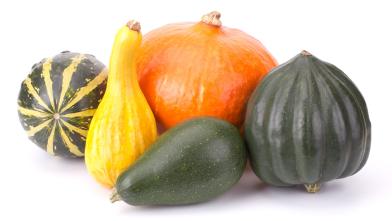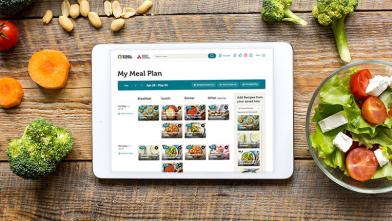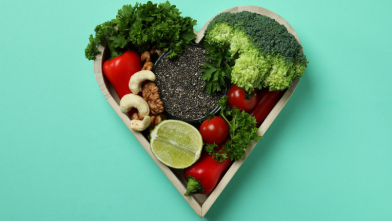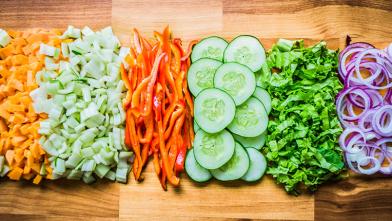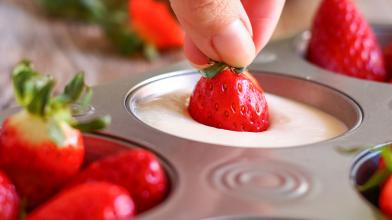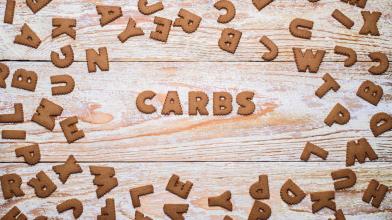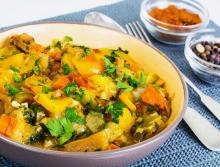
Rice
Basmati rice is used often in Indian cooking for its aroma and fluffy texture. Some restaurants and grocery stores may offer brown basmati rice, which offers a little bit more fiber per serving than white basmati rice.
Choosing brown over white rice will help keep your blood glucose (blood sugar) levels in your target range. The higher fiber content in brown basmati rice means slower digestion compared to white rice. This means a slower and steadier rise in blood glucose levels..
You can also consider swapping rice for riced cauliflower if it’s available at your grocery store. Riced cauliflower generally is much lower in carbohydrate.
Quinoa is another option as a higher fiber, higher protein, gluten free, whole grain. Quinoa can be substituted for rice in most Indian dishes. Quinoa is the highest in both protein and fiber compared to brown rice, brown basmati rice or white rice.
Spices
Spices like turmeric, cumin, and coriander are central to Indian cuisine, adding richness and aromatic depth to dishes. Turmeric gives curries and stews vibrant color and earthy notes. Similarly, cumin and coriander add warm, nutty flavors. Along with adding flavor, these spices provide antioxidants, which help with inflammation. Spices are a great option for flavoring your food without adding a bunch of calories, carbohydrates, fat, or sodium.
Oil
Ghee, a traditional Indian cooking fat, adds richness and a buttery flavor to dishes but is high in saturated fat. You can cut back on saturated fat by using heart-healthy oils such as olive or avocado oil instead of ghee. .
Legumes and Protein
Legumes, including lentils and chickpeas, are cornerstones of Indian cuisine. They have protein and fiber that help you feel full and have less of an affect on blood glucose levels. A great source of plant-based protein, legumes are an important part of vegetarian and vegan diets as well those looking to add other sources of protein to their eating plan.
Legumes include lentils, chickpeas, black beans, kidney beans, and peas. They are plant-based proteins that also contain carbohydrate and fiber. On average, 1/3 cup serving of cooked legumes is 15 grams of carbohydrate, 4–5 grams of fiber, and 5 grams of protein. Because legumes are rich in fiber, they are beneficial for digestive health, weight management, and blood glucose regulation.
Veggies
Vegetables such as spinach, cauliflower, and eggplant play a vital role in Indian cooking, providing essential vitamins, minerals, and fiber. These versatile ingredients not only add texture and color to dishes, but also contribute to nutritional value. Increasing your non-starchy vegetable intake helps you feel full for longer and supports blood glucose management. And remember, according to the Diabetes Plate, half of your plate should be filled with non-starchy vegetables.
The Takeaway
By trying out these healthier tweaks and choosing ingredients packed with nutrients, you're exploring new options and looking after your health. You can enjoy the rich culinary heritage of traditional Indian cuisine while making choices that support your eating plan. Experiment with different ingredients and enjoy every bite knowing you're making delicious and nutritious choices for yourself.
Try these other diabetes-friendly Indian recipes

If you want to add more non-starchy vegetables to your diet, try this recipe that utilizes a variety of veggies to pack in the flavor.
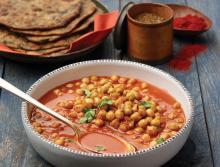
Chana, or chickpeas, masala is an extremely popular dish in both India and the U.S. This diabetes-friendly version uses a mixture of spices for a flavorful dish.

Lassi is a yogurt-based smoothie that uses fresh fruit and herbs to make a delicious treat. Try this naturally sweetened version!
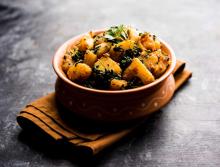
Spinach and Sweet Potato Curry (Saag Aloo)
This recipe for a spiced Indian spinach dish replaces the regular potatoes with sweet potatoes for a delicious and healthful new take on curry.








